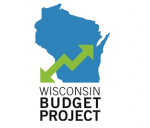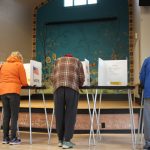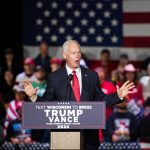Fewer, Less Experienced Teachers Hinder Wisconsin Public Schools
Recent budget decisions by Wisconsin lawmakers spell more challenges for Wisconsin schools in the future.
Wisconsin public schools face significant hurdles in continuing to provide high-quality education, according to a new Wisconsin Budget Project analysis of school trends. A long-term reduction in resources, increased student-teacher ratios, and fewer experienced teachers are at the forefront of these challenges.
“Wisconsin needs a well-educated workforce if we want to succeed economically,” said Tamarine Cornelius, an analyst at the Wisconsin Budget Project. “But schools in Wisconsin have less money than before, fewer teachers overall, and fewer experienced teachers. That makes it harder for today’s students to get the kind of high-quality public education that Wisconsin families have come to expect, and that Wisconsin needs in order to build a solid economy for the future.”
Among the findings of the analysis:
- Wisconsin public schools spent less per student in 2013 than they did in 2005, even as school spending per student increased nationally. Spending per student dropped 4.8% in Wisconsin between those years, and our rank among the states dropped from 13th to 21st. Spending by Wisconsin districts on both salaries and benefits dropped over this period.
- The student-teacher ratio in Wisconsin has risen faster than the national average. Wisconsin has 0.9 more students per teacher in the 2013 school year than in 2005; nationally schools averaged an increase of just 0.2 students per teacher over this period.
- Teachers in Wisconsin have less experience than they did a few years ago. The share of school districts that had teaching staffs with an average of at least 15 years of experience declined dramatically between the 2011 and 2012 school year, after lawmakers increased the employee share of retirement and health benefits, limited the ability of teachers and other public employees to collectively bargain, and made major budget cuts to public schools. In the 2014 school year, only about 4 in 10 Wisconsin school districts had teaching staffs with at least 15 years experience, down from more than 6 in 10 districts in the 2011 school year.
“Wisconsin school districts lost a lot of experienced teachers,” said Cornelius. “That means students are being taught by teachers who don’t have as much practice helping students learn.”
Recent budget decisions by Wisconsin lawmakers spell more challenges for Wisconsin schools in the future. Lawmakers approved a slight increase for education in the 2015-17 state budget, but districts are required to use most of the money to offset property taxes rather than to educate students in the classroom. As spending capacity lags behind educational needs, many districts may reduce academic offers and further reduce salaries for experienced teachers and other individuals who help educate students and keep schools running, such as social workers, teacher aides, and janitors.
“Wisconsin has a long history of investment in public schools,” said Cornelius. “But with recent budget decisions, lawmakers have prioritized tax cuts over our public school system. If that continues, students in Wisconsin public schools will face increasingly crowded classrooms and have fewer experienced teachers.”
The Wisconsin Budget Project, an initiative of the Wisconsin Council on Children and Families, is an independent Madison-based research group that focuses on tax and budget policy.
The full analysis is available on the Wisconsin Budget Project website.
NOTE: This press release was submitted to Urban Milwaukee and was not written by an Urban Milwaukee writer. While it is believed to be reliable, Urban Milwaukee does not guarantee its accuracy or completeness.





















